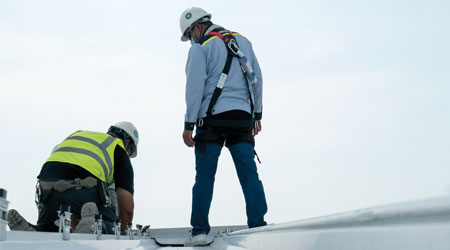 Accurately designing roofing systems is critical to contributing to total building energy efficiency and to projecting construction and maintenance costs.
Accurately designing roofing systems is critical to contributing to total building energy efficiency and to projecting construction and maintenance costs.Qualified Contractors Essential for Successful Roofing Upgrades
Attention to design, warranties and qualified contractors up front can be the difference between success and failure
Many roof project specifications indicate the installer must be a qualified subcontractor that is approved, authorized and licensed by the roofing system manufacturer to install the manufacturer’s product, as well as that the subcontractor is eligible to receive the manufacturer’s special warranty.
Consulting the manufacturer’s representative for subcontractor recommendations does not lend itself to competitive bidding, but it might ensure quality and warranty requirements. As an alternative, the construction manager or owner might issue requests for proposals (RFP) with the latest issued construction documents to a variety of subcontractors that are approved, authorized and licensed by the roofing manufacturer.
During the procurement process, managers choosing a roofing subcontractor need to consider general business information and history, financial stability, and safety record. Additional inquiries to consider during the prequalifying process might include:
• a list of recent contracts
• the size of the largest contract
• bankruptcy history, if applicable
• expected annual revenue
• parent affiliates or subsidiary companies and aliases
• size of the current workforce
• active jobs, which might indicate the work backlog
• capacity for this job.
The subcontractor’s safety track record is arguably the most important factor The industry measures safety by using experience modification rating (EMR). Insurance companies use EMR to gauge past costs of injuries and estimate future risk. The lower the EMR — industry standard is 1.0 — the lower the company’s worker’s comp premiums will be. Managers can obtain a company’s EMR by submitting a signed letter of authority to the National Council on Compensation Insurance, which will provide the current rating, past rating, and a risk history report of the past five payroll years.
Katheryn Bajo is a building enclosure project engineer in the New York City headquarters office of Horizon Engineering Associates, www.horizon-engineering.com. For the past six years, she has provided consulting services in the design development, procurement and installation of common building enclosure systems.
Related Topics:














